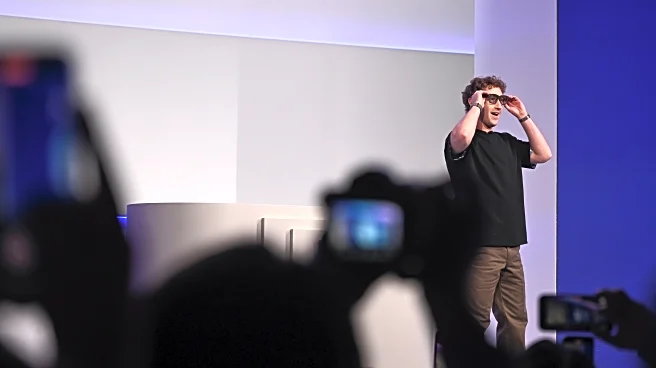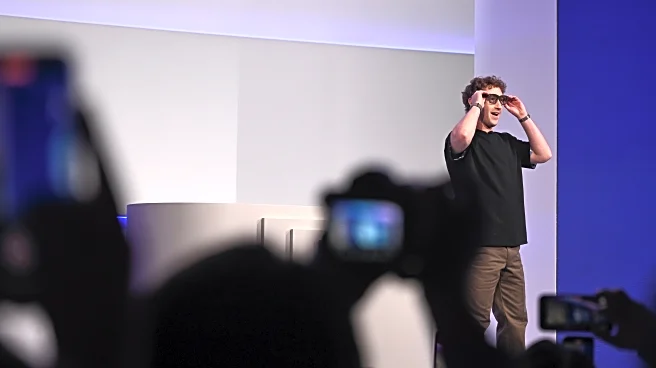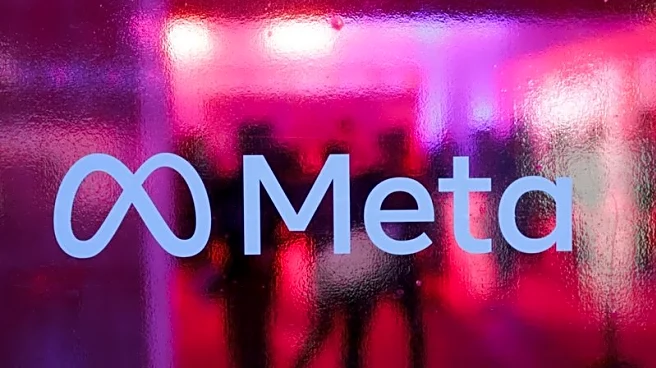What's Happening?
Meta has introduced its new Ray-Ban Display glasses at the annual Connect event in Menlo Park, California. These smart glasses feature a tiny display inside the lens, allowing users to interact with visual content without needing to look at their phones. The glasses are part of Meta's strategy to integrate artificial intelligence into everyday devices. CEO Mark Zuckerberg highlighted the potential of AI glasses to enhance user interaction by providing visual feedback through a small display on the right lens. The glasses are priced at $799 and include a 'neural' wristband for navigation through subtle hand gestures.
Why It's Important?
The introduction of the Ray-Ban Display glasses marks a significant step in the evolution of wearable technology, particularly in the realm of augmented reality. By integrating AI capabilities, Meta aims to offer a more immersive and interactive user experience. This development could influence consumer electronics trends, as it represents a shift towards more integrated and less intrusive technology. The glasses could appeal to tech enthusiasts and early adopters, potentially driving demand for similar products. However, the high price point and privacy concerns may limit widespread adoption initially.
What's Next?
The Ray-Ban Display glasses will be available in select U.S. retail stores starting September 30, with a global rollout planned for next year. Meta will likely monitor consumer feedback and adoption rates closely to refine future iterations of the product. The company may also face scrutiny regarding privacy and data security, given its history with personal information management. As the glasses enter the market, Meta will need to address these concerns to build consumer trust and expand its user base.
Beyond the Headlines
The launch of these smart glasses raises questions about the balance between technological advancement and privacy. As devices become more integrated into daily life, the potential for surveillance and data collection increases. Meta's approach to addressing these issues, such as the inclusion of a recording indicator light, will be crucial in shaping public perception and acceptance of such technologies.












